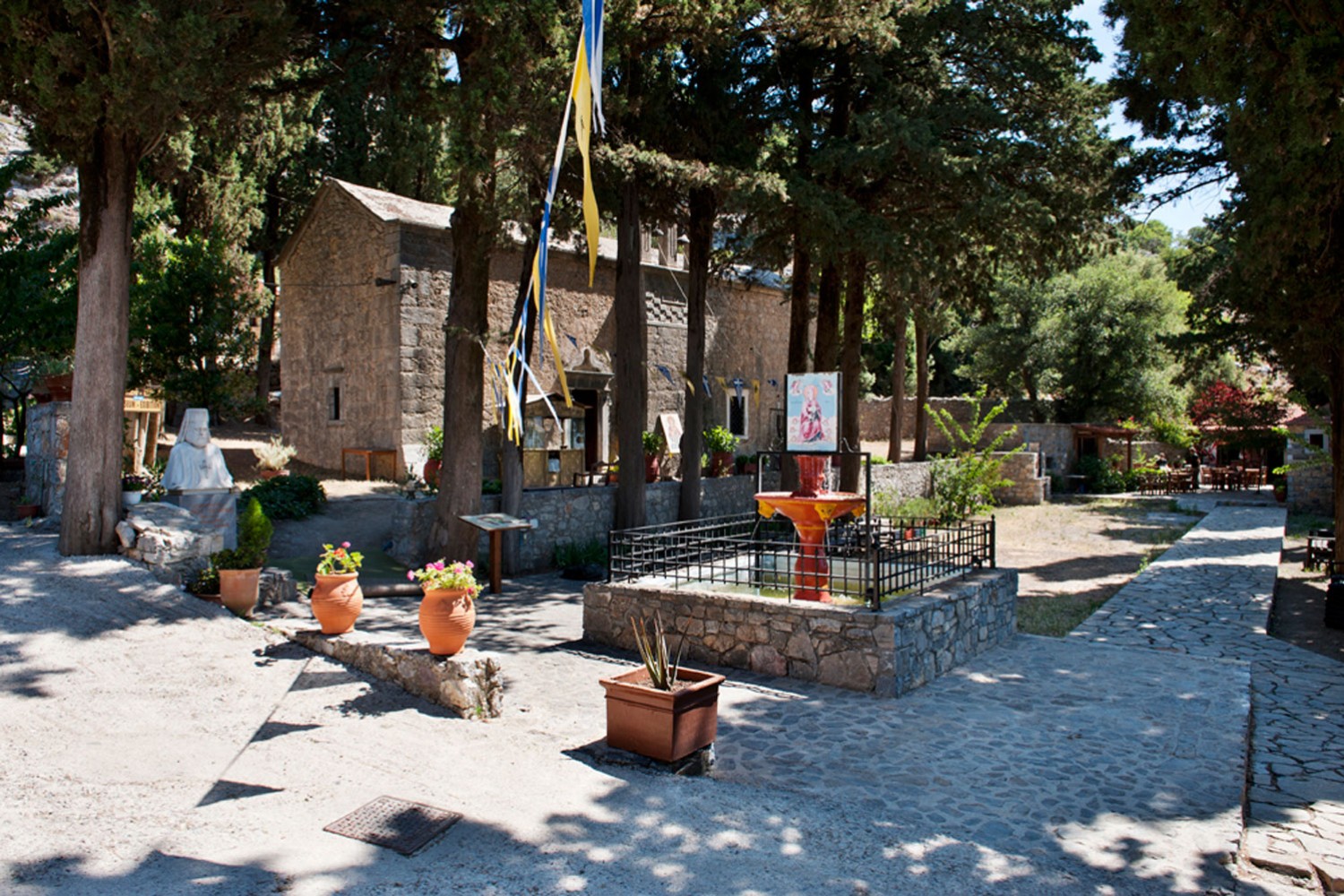It is built on a small land elevation on the right side of Chavgas riverbed opposite Ag. Konstantinos. It had 9 inhabitants in 2001 and it is 57.9 km far from Heraklion and 40.9 km far from Ag. Nikolaos.
The Holy Monastery of Kroustallenia is the religious center of Lasithi Plateau and the meeting place of the inhabitants, when they have to discuss issues of general interest.
It is not known when the Monastery was founded. Some literary testimonies mention the existence of the monastery in the 13th century, so its foundation should be placed in the Second Byzantine period. However, these testimonies are not confirmed by other sources and their dating is not certain.
The second dating is based on the fact that during the distribution of fields of Lasithi to Peloponnesian refugees in 1543, among the other beneficiaries were the sisters Theokliti and Palantia Danassi who undertook the obligation to establish two monasteries in Lasithi, that of Agia Marina and Holy Mary respectively.
We know that Theokliti founded the Monastery of Ag. Pelagia in Alexena. It is also certain that Palantia founded the Monastery of Holy Mary or possibly renovated an old one, since 40 years later the concession of the fields was valid, it is very likely that the Monastery founded by Palantia is the Holy Monastery of Kroustallenia, which should therefore have been founded in the middle of the 16th century. This view is reinforced by the existence of an architectural element located in the Monastery that used to exist in the skylight of the sanctuary and was removed before the war during the renovation of the church to facilitate the ventilation of the Chancel. Today, its base and some parts of it that are kept in the monastery can still be seen in their original position.
It has exactly the same subjects, it is of the same elaborate construction and has the same dimensions as the one that is still in place in the temple of Pantanassa in Avdou. Obviously, both of these works were created by the same craftsman. Since the date of the construction of the temple of Pantanassa is known, 1600 AD, we can easily claim that the Holy Monastery of Kroustallenia must have been erected at the same time.
The Monastery played an important role in all the events of the period of Ottoman rule. It supported the team of the Chainides of Kazanomanolis whose hideout was in Aloida near its glebe, in Ag. Apostoloi. It was the meeting place for the area’s captains and its abbots participated in decision-making meetings and were members of local delegations in pan-Cretan or local meetings.
In the Monastery ended up and were often hosted foreign travelers and visitors, such as Siber in 1817, to whom the older monks said that no European or Frank had been to Lasithi in the past 27 years, i.e. since 1790.
Not only foreigners but also official Greeks were hosted in the Monastery: the High Commissioner Prince George in February 1903 and Eleftherios Venizelos the same year, a little later.
During the revolution of 1821, the Monastery was looted and then set on fire and destroyed by the Turkish-Egyptian troops in January 1823. During the Great Revolution of 1866-69, the Monastery played a leading role because during the Battle of Lasithi (20-30 May 1867) it constituted the seat of the Revolutionary Committee of the Eastern Provinces. This was where the ammunition and supplies depots as well as the “firing plant” were located.
During the period of the allied occupation of Crete (1897-98) a small detachment of French soldiers settled in Kroustallenia to maintain order on the Plateau.
During the Cretan State, Kroustallenia, as the middle ground of the route Vionnos-Neapoli (back then Vionnos belonged to the prefecture of Lasithi) hosted the Viannites who went to the capital of the Prefecture to carry out their affairs.
After the commitment of 2/5 of the property of the Monasteries for the strengthening of the reserve funds, the Monastery was going to be used for tourism, and in fact, the relevant plans had been prepared, but in the end they were not realized. During the period 1940-44, the Monastery became a center of national action again, while later in February 1943 it was turned into a concentration camp by the occupiers.
Today the Monastery is trying to adapt to the new environment and situation, always within the framework of Orthodox monasticism.
An important activity that developed successfully in the past in the Monastery was the regular operation of a school from the middle of the 19th century until 1926.
Kroustallenia’s contribution to the religious, social and national sector was great. In this remote corner of the Cretan land in the inaccessible mountains of Lasithi, Kroustallenia kept alive the national consciousness, the concept of social solidarity and the flame of faith: the bases of the nation’s rebirth.
